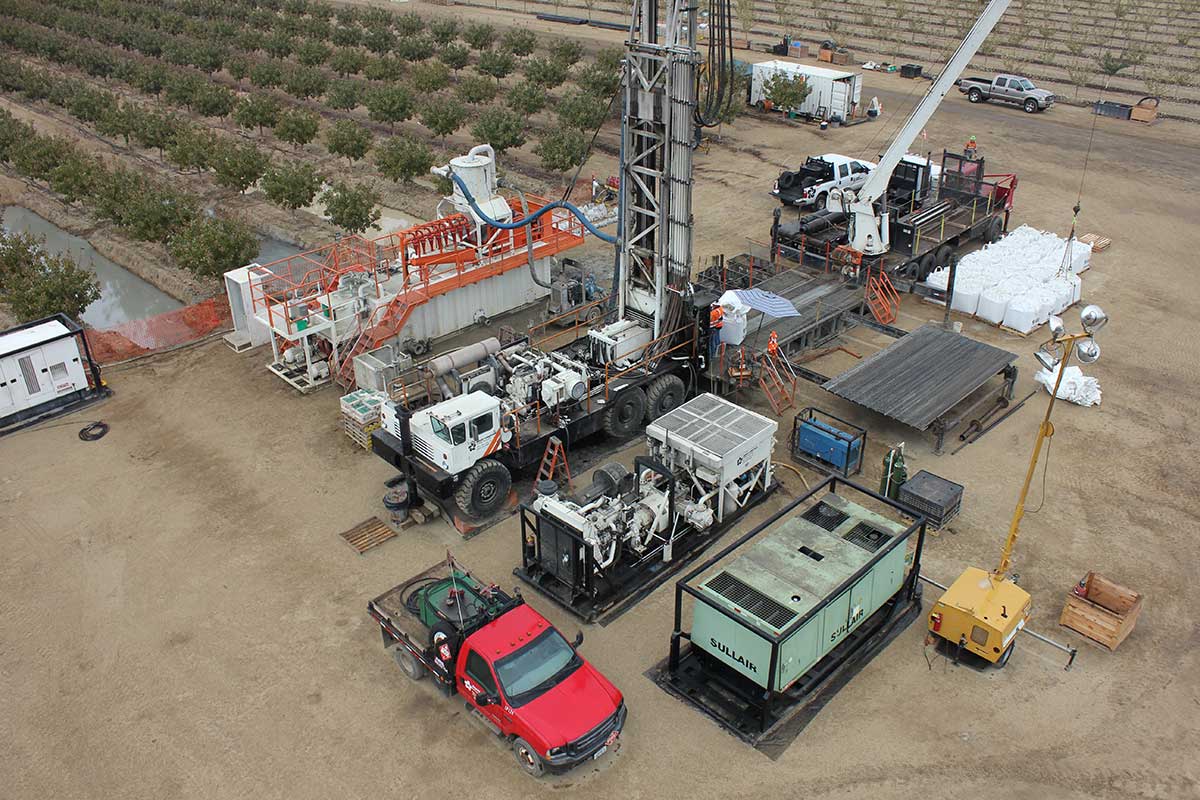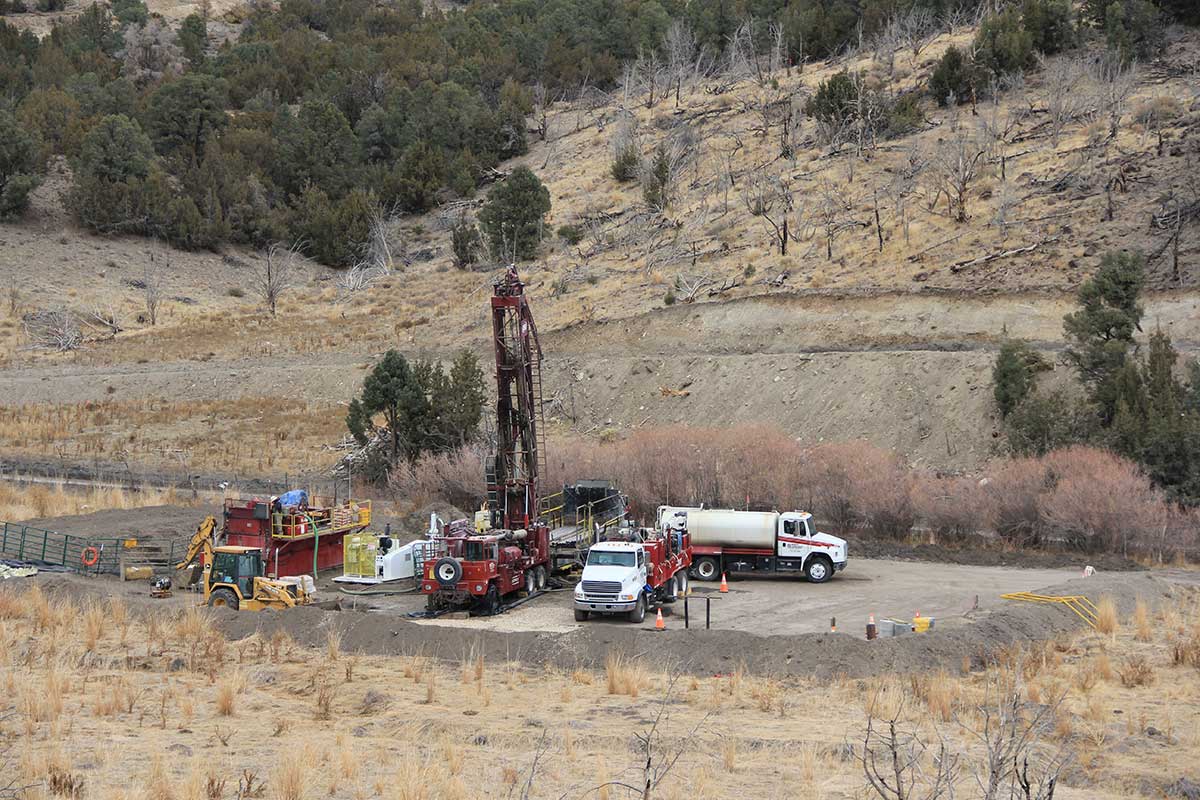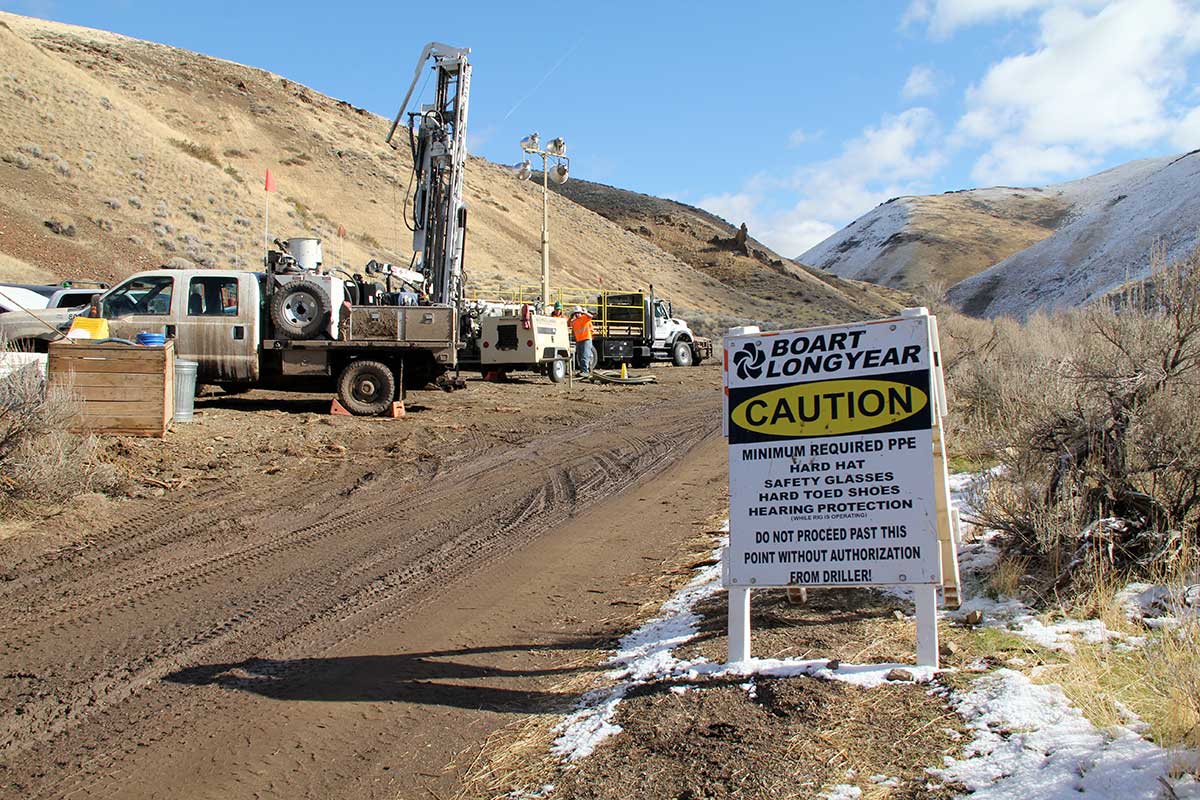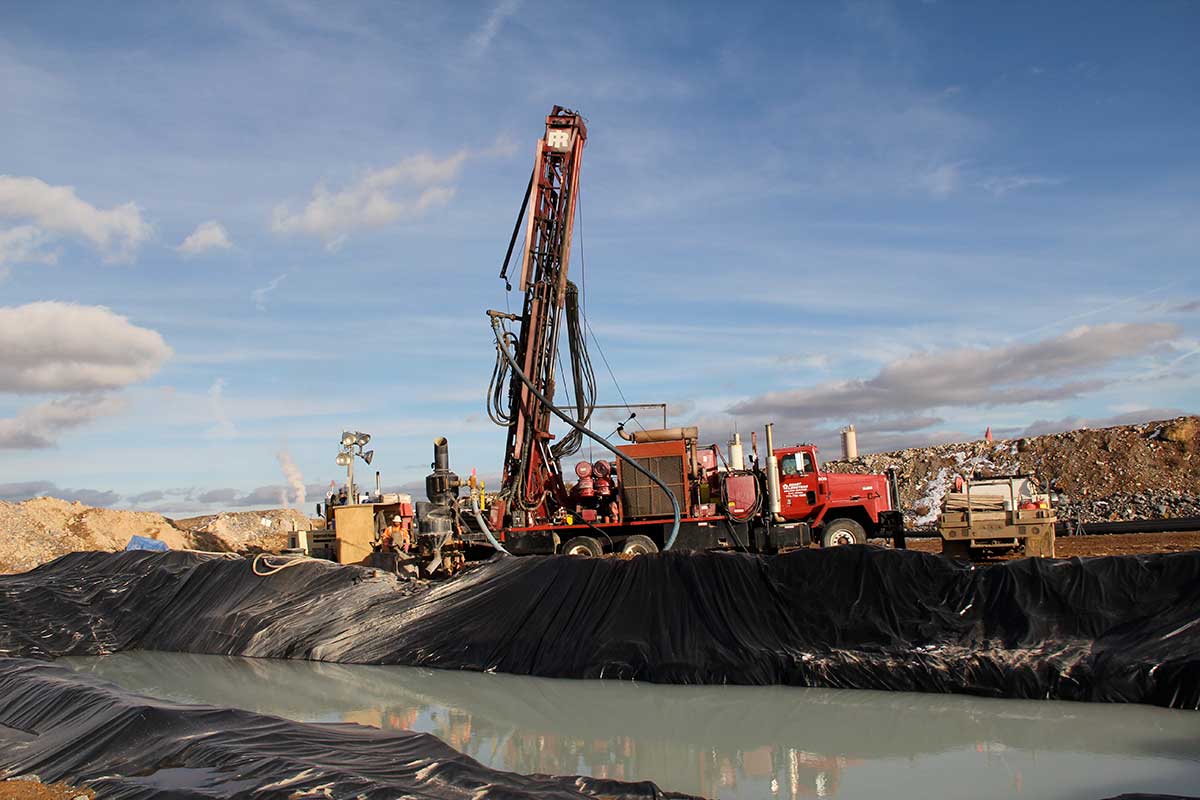EXPLORATION
February 26, 2018
Five Tips for Drill Pad Planning
Designing and planning a drilling project is a complex exercise in which many risk factors are considered in order to mitigate issues that could impact productivity and/or budget, ultimately impeding the success of the project. After careful planning, there is a healthy amount of cautious optimism that you thought of everything, except there is always that small chance something was missed.
This article addresses considerations and common pitfalls in drill pad planning, which is critical to the mobilization of the drills and crews that will complete your carefully designed drilling project. The first thoughts should be “what purpose is the hole, and what type of drilling will be performed.” Once this is answered, thought can be applied to drill pad size with consideration for the size of the equipment needed to perform the work, and all of the necessary ancillary equipment, including sumps and access. The depth of the hole can also affect pad size and organization of the equipment for mud and cuttings management, drill rod staging, and the storing of consumables.
1. Geologists should work with their selected drilling contractor to ensure the ideal drill pad dimensions for both safety and productivity.
For example, if there’s not enough room to position the rig and the rod handling equipment, manually handling rods can impede productivity and reduces safety on the site. A common misconception is that the smaller the drill pad, the less it will cost. We hear it all the time “What’s the smallest pad you can get by with?” But cutting corners on this important aspect of a drilling program can cost a lot more in the end. The cost savings are not available by making the pad as small as possible. In reality, it most likely will cost more to have an under-sized drill pad.
While drill pad size is critical, it’s also critical to plan for the drill pad around the hole based on rig size and appropriate places to stage ancillary equipment and supplies.
2. Placement of the boreholes on the drill pad should ensure at least three meters (10 feet) of clearance around the drilling equipment.
On most drilling projects, the borehole’s planned location is based on the data required for the project. So the pad layout needs to move around the planned hole, not the other way around.
I’ve personally been on a bid walk where the drill pad was large enough to accommodate the work; however, the borehole to be drilled was right up against the edge of the drill pad. This pad wouldn’t have allowed for proper equipment layout, or a working clearance around the equipment for the crews to perform the work safely.
The drill pad layout plan should address space for the all of the equipment, site and equipment access, and staging area for consumables or installation materials (if a laydown yard isn’t available) to strategically optimize the drill pad for safety and productivity. For example, site access should be controlled so that site visitors remain safe and are not exposed to any site hazards prior to a comprehensive and robust site induction.
3. If surface disturbance permits or environmental permits are required, a consultation with a drilling contractor on drill pad size prior to applying for the permits might save time and mitigate any risks.
Not having permits with the right amount of surface disturbance for the project is a risk that can be mitigated with communication. A miscalculation in required disturbance area can lead to holes being removed from the scope to remain in compliance with the regulators. Work diligently with all stakeholders in the permitting application process to ensure the exploration/project team(s) and the environmental/permitting team(s) are on the same page. A simple oversight or misunderstanding can possibly delay site mobilization or start-up if the permits are not what’s needed for the appropriate sized and located drill pad.
Ideally, these conversations should start happening early in the planning stages of the drilling program. Making assumptions is not always the best practice.
Other considerations when drill pad planning include:
Access road
- Width
- Berms
- Grades
- Overhead clearances
Location of water and fuel
- Road conditions
- Berms
- Width
- Grades
- Distance from pad
- Access to the mud or fuel tank from the pad around other equipment
Sumps
- Right size
- Position near rig, hole and mud tank
- Ramped
- Guarded
- Space between splitter and sump and return hose
- Access to remove muds when sump is full if undersized
Communications
- Radio
- Cell
- Satellite
Drainage
- Environmental controls
- Runoff
Ground control conditions
- Sloped banks
- Rocks in face
Surveyed hole layout complete
- Hole location
- Direction
- Front/back site
Power lines and utilities
- Minimum distances away from overhead lines based on voltage
- Known locations of subgrade utilities from locating services and local owners
If a sump is required for the project, planning for sump size and placement on the drill pad should be thought through thoroughly. If the sump needs to be emptied prior to the completion of the drilling project, is there enough room for a vacuum truck to safely and adequately access the sump or access for pump placement?
After all of your careful planning for your drilling project, the real trick for drilling contractors is to anticipate what’s going to be happening on the drill pad to properly mitigate safety and productivity risks and plan accordingly. That’s WHY drilling projects are so carefully planned.
Another often overlooked factor in drill pad planning is communication.
4. Communication is critical to working closely with all involved parties and putting egos aside to really listen to concerns and suggestions to optimize the drill pad for the best possible drilling program outcome.
Drill pad layout can be critical to a safe, smooth, and successful drilling program. A drill pad set up where safety or productivity is compromised is a painful, expensive result.
5. The best and fastest way to plan for your drill pad is to consult with a drilling contractor, like Boart Longyear.
Experience with a wide variety of variables adds value to the right drilling contractor. It’s hard to put a price or billing metric on the peace of mind you get for the best possible outcome when you’re working with a drilling contractor you trust.
Call today for your free consultation on drill pad size, permitting, or layout.
Disclaimer: The recommendations in this article are generalized for most projects. Every drilling project is different and these recommendations are not intended to replace customized recommendations and solutions based on the specific variables of individual projects.
DRILL PAD LAYOUT EXAMPLES
Download a PDF of recommended drill pad layouts.
DOWNLOAD
[pardot-form height="580" id="3138" title="Download Drill Pad Layouts"]
Media Permission: Boart Longyear grants you immediate agency to republish this article. We request that you cite Boart Longyear as the source and provide a link back where appropriate.







